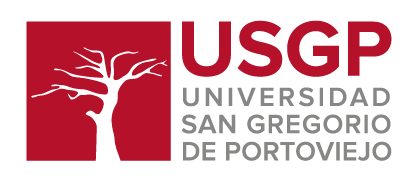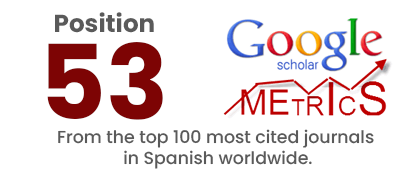Models for evaluating the level of development of destinations. Recommendations for the destination Cuba
DOI:
https://doi.org/10.36097/rsan.v1i57.2413Keywords:
competitiveness, Cuba, evaluation models, level of development, tourismAbstract
The study of the level of development of destinations helps to understand the evolution of tourist spaces, serving as a basis for managers to design strategies that increase their competitiveness. The background information on the website indicates that in Cuba the sector is not managed under an approach or model applicable to the current reality and there is a lack of a tool that allows, as part of strategic planning, to evaluate the level reached by specific destinations. Therefore, the general objective of this research was to propose guidelines for a model that allows the evaluation of the level of development of Cuban tourist destinations. The applied methodology consisted of two phases that combine several tools where expert interviews and bibliographic review predominate. The main results allowed us to identify that the most internationally recognized models have different strengths and weaknesses; their effectiveness will depend on the adaptation to the characteristics of the destination where it is applied. The last phase of the research allowed us to propose the Three-Phase Development Model as a model most adjusted to the current reality of the destination, although for its implementation other research must be carried out where adjustments are made to the current proposal.
Downloads
References
Agarwal, S. (2002). Restructuring seaside tourism: The resort lifecycle. Annals of Tourism Research, 29, 25-55. http://dx.doi.org/10.1016/S0160-7383(01)00002-0
Alonso, V. H. (2009). Un modelo integral para evaluar la competitividad de los destinos turísticos basado en la identificación e integración de factores críticos de éxito [Tesis doctoral, Universidad de Las Palmas de Gran Canaria]. Repositorio Institucional de la Universidad de Las Palmas de Gran Canaria. https://accedacris.ulpgc.es/bitstream/10553/5515/2/0628686_00000_0000.pdf
Bansal, S., Prashant, K., Kumar, S., Ravish, M. & Kumar, J. (S/A). Stanley Plog’s Psychographic Model. En Tourism and Hospitality: Concept, Component, Status and Trends. Patshala.
Benseny, G. (2006). El espacio turístico litoral. Aportes y Transferencias, 10(2), 102-122. http://redalyc.uaemex.mx/src/inicio/ArtPdfRed.jsp?iCve=27610208
Butler, R. (1980). The Concept of a Tourist Area Cycle of Evolution: Implications for Management of Resources. Canadian Geographer Review, 24(1), 5-12. https://www.degruyter.com/document/doi/10.21832/9781845410278-007/html
Callizo, J. (1989). El espacio turístico de Chadefaud, un entrevero teórico: Del historicismo al materialismo dialéctico y el sistemismo behaviourista. Geographicalia, 26, 37-44.
Chadefaud, M. (1987). Aux origines du tourisme dans les pays de l’Adour (Du mythe à l’espace: Un essai de géographie historique). Université de Pau et des Pays de l’Adour.
Cooper, C. (1994). The Destination Life Cycle: An Update. In Seaton, A.(ed.): Tourism. The State of the Art. United Kingdom.
Diéguez, I., Gueimonde, A., Sinde, A. & Blanco, L. (2011). Análisis de los principales modelos explicativos de la competitividad de los destinos turísticos en el marco de la sostenibilidad. CULTUR: Revista de cultura y turismo, 5(2), 101-124. www.uesc.br/revistas/culturaeturismo
Diez, V.A. (2020). La teoría del ciclo de vida de los destinos turísticos: el caso de Tandil. Realidad, Tendencias y Desafíos en Turismo, 18 (1), 1-26.
Durán, E. (2013). Actualización del estudio del ciclo de vida del destino turístico Holguín [Trabajo de Diploma, Universidad de Holguín]. Repositorio Institucional de la Universidad de Holguín. https://repositorio.uho.edu.cu/handle/uho/5204?show=full
Dwyer, L. & Kim, C. (2003). Destination Competitiveness: Determinants and indicators. Current Issues in Tourism, 6(5), 369-414. https://doi.org/10.1080/13683500308667962
Ejarque, J., (2005). Destinos turísticos de éxito. Ediciones Pirámide.
Espinós, E. (2019). El modelo del ciclo de vida de Butler en los destinos con overtourism [Trabajo de Diploma, Universitat Autònoma de Barcelona]. Repositorio Institucional de la Universitat Autònoma de Barcelona. https://rua.ua.es/dspace/handle/10045/96742?mode=full
Franco, M., & Hernández, Y. (2022). Competitividad y desarrollo de los destinos turísticos: Necesidad importante para el destino Cuba. Universidad de Cienfuegos.
Garay, A. (2007). Propuesta de un modelo de competitividad de destinos turísticos. [Tesis doctoral, Universitat Autònoma de Barcelona]. Repositorio Institucional de la Universitat Autònoma de Barcelona.
García, N. (2017). Management model to promote tourism development in the communities of Manabi, Ecuador. CULTUR, 11(2). http://periodicos.uesc.br/
García, Y., & González, Á. M. (2016). La innovación como nuevo paradigma de la competitividad: perspectiva en la gestión del destino país Cuba. Universidad Veracruzana. https://www.uv.mx/iiesca/files/2017/03/05CA201602.pdf
Gormsen. (1981). The spatio-temporal development of international tourism: Attempt at a centro-periphery model. La Consommation despace par le Tourisme et sa Preservation.
Haywood, K. (1986). Can the tourist area life-cycle be made operational? Tourism Management, 154-167. http://dx.doi.org/10.1016/0261-5177(86)90002-6
Hurtado de Mendoza, S. (2003). Criterio de selección de expertos. Su procesamiento a través del método Delphy. http://www.ub.edu/histodidactica
Keller, C. P. (1987). Stages of peripheral tourism development in Canada´s Northwest Territories. Tourism Management, 8(1), 20-32. https://doi.org/10.1016/0261-5177(87)90036-7
Litvin, S. (2006). Revisiting Plog’s model of allocentricity and psychocentricity … one more time. Cornell Hotel and Restaurant Administration Quarterly, 47(3), 245-253. https://doi.org/10.1177/0010880406289138
López, V. (2011). ¿El mismo modelo para siempre? Comentarios sobre el ciclo de vida del área turística a partir de la experiencia de Bahías de Huatulco. Seminario RENOVESTUR, México. http://rua.ua.es/dspace/ bitstream/10045/20511/1/Seminario_Renovestur_01.pdf
Lundgren, J. (1982). The Tourism Frontier of Noveau Québec: Functions and Regional Linkages. Tourism Review, 37, 17-35. https://www.emerald.com/insight/content/doi/10.1108/eb057856/full/html
Martín, R. (2006). El comercio internacional del turismo en condiciones de oligopolio. El caso de Cuba [Tesis doctoral, Universidad de La Habana].
Martín, R., Abreu, D., Torres, L., Delgado, A. & Franco, M. (2020). Grupo Temporal de Trabajo: Futuro Inmediato [Informe de Cierre de Investigación, Universidad de La Habana].
Miossec, J. M. (1977). Un model de l’espace touristique. Espace géographique, 6, 41-48. http://dx.doi.org/10.3406/spgeo.1977.1690
Navarro, E., Thiel, D., & Romero, Y. (2015). Periferias del placer: Cuando turismo se convierte en desarrollismo inmobiliario-turismo. Boletín de la Asociación de Geógrafos Españoles, 67, 275-302. https://riuma.uma.es/xmlui/handle/10630/29490
Paz, R. (2011). Análisis del ciclo de vida del destino turístico Holguín [Trabajo de Diploma, Universidad de Holguín]. Repositorio Institucional de la Universidad de Holguín. https://repositorio.uho.edu.cu/handle/uho/4917
Pearce, D. (2003). Geografia do turismo: Fluxos e regiões no mercado de viagens. Aleph.
Pelegrín, L., Sabín, R., & Martínez, O. (2018). El ciclo de vida del producto turístico. Trinidad de Cuba como caso de estudio. Rehuso, 3(2), 1-12. https://revistas.utm.edu.ec/index.php/Rehuso/article/view/1370/1247
Pelegrín, N., Naranjo, M., Escobar, A. & Achán, Y. (2013). El ciclo de vida del producto turístico ciudad de Trinidad. Escuela de Hotelería y Turismo FORMATUR.
Pérez, J., Gómez, O., Sangroni, N., Cruz, C. & Santos, O. (2021). Estudio de modelos que abordan la gestión de destinos turísticos. Ingeniería Industrial, XLII (3), 1-14. http://scielo.sld.cu/scielo.php?pid=S1815-59362021000300109&script=sci_arttext&tlng=pt
Plog, S. (1972). Why Destination Areas Rise and Fall in Popularity. Travel Research Association.
Rodríguez, G. (2016). Determinación de la fase del ciclo de vida del destino turístico regional Villa Clara y de los factores influyentes en su estrategia de crecimiento [Trabajo de Diploma, Universidad Central Marta Abreu de las Villas]. Repositorio Institucional de la Universidad Central Marta Abreu de las Villas https://dspace.uclv.edu.cu/handle/123456789/7095?show=full
Ritchie, J. & Crouch, G. (2003). The Competitive Destination. A Sustainable tourism perspective. CABI Publishing.
Soares, J. C., Gandara, J. M. & Baidal, J. I. (2012). Indicadores para analizar la evolución del ciclo de vida de los destinos turísticos litorales. Investigaciones turísticas, 3, 19-38. https://rua.ua.es/dspace/handle/10045/23172
Toledo, G., Valdés, J., & Pollero, A. (1998). Empresas turísticas en ambiente globalizado: Marketing y competitividad. Estudio de casos de clusters turísticos. Revista Eletrônica de Administração, 9(3). https://seer.ufrgs.br//read/article/view/42679
Vera, J. F., López, F., Marchena, M. & Antón, S. (2011). Análisis territorial del turismo y planificación de destinos turísticos (Vol. 59). Tirant lo Blanc. https://dialnet.unirioja.es/servlet/libro?codigo=675851
Osorio, M., Deverdum, M. E., Mendoza, M. M., & Benítez, J. (2019). La evolución de Ixta-pa- Zihuatanejo, México, desde el modelo del ciclo de vida del destino turístico. Región y sociedad, 31, e1012. http://dx.doi.org/10.22198/rys2019/31/1012
Virgen, C. (2009). El ciclo de vida de un destino turístico: Puerto Vallarta, Jalisco, México. Revista Cultura e Turismo, 03(01). http://www.uesc.br/revistas/culturaeturismo
Downloads
Published
How to Cite
Issue
Section
License
Copyright (c) 2024 Revista San Gregorio

This work is licensed under a Creative Commons Attribution-NonCommercial-NoDerivatives 4.0 International License.


















